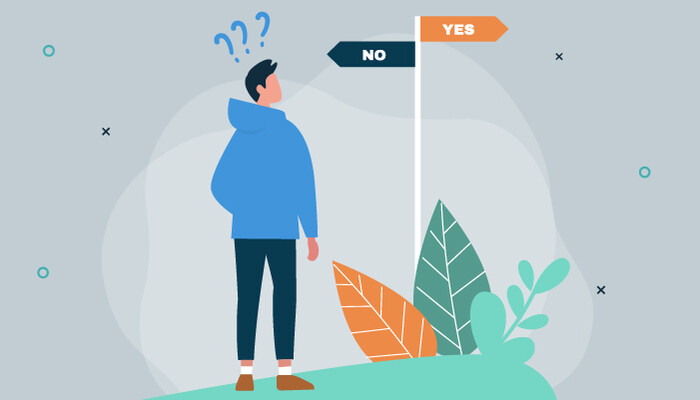Do you know how to choose and compare graphic design agencies to work with? It can be a tricky task.
There are so many options that you could spend the next year looking through different websites and portfolios, trying to make your mind up. There are agencies on your doorstep and agencies a million miles away.
Draftss has also helped its clients to develop substantial e-commerce platforms with unlimited graphics designs, illustrations, WordPress, HTML, and more for building your website, brand, etc. you can check on our website at draftss.
1. OUTLINE YOUR PROJECT
The first thing to do when it comes to any sort of design project is to jot down a basic outline.
WHAT EXACTLY DOES THE PROJECT ENTAIL?
Maybe you’re a start-up company and you have no idea where to start when it comes to the design side of the business. You know you need to get a logo designed. However, the chances are that your start-up company will need more than just a logo design. If you don’t understand the difference between a logo design and branding, check out our article, What is Branding?

You may have had a logo and brand identity designed 5 years ago. However, business picked up and you never got around to having your business cards or letterheads designed and you’ve decided now is the time. Having at least some idea of what the project entails will help both you and your chosen agency.
Check out this post if you’re looking for stationery design inspiration.
WHAT ARE THE GOALS OF THE PROJECT?
Some people might say, the goal of the above project outline is “to make my start-up look good.” However, this is flawed. The goal of “looking good” is subjective, and therefore, cannot be measured. For example, if you’re rebranding your existing company, you might set goals such as;
- We want to rebrand to increase monthly sales by 10%
- We want to increase recognition within [specific industry] using newly branded advertising. The increased recognition will be measured through our increased social media following.
- Our new-look website will increase monthly profits by Rs.1000
Having 3 or 4 goals noted down for the project will help your design agency understand the problems you’re facing and how they can help you.
DO YOU HAVE A BUDGET IN MIND?
At this early stage in the project, you might be unaware of the costs related to your project. Thankfully, there are plenty of articles online that can help give you initial figures and ideas. We’ve written a post about the cost of a logo design project. This will give you at least a ballpark figure to get you thinking about your budget.
It’s important to have a sensible budget in mind for your project, as later in the process, it will help make clear which graphic design agencies do and don’t fit your requirements. Having a flexible budget is also a good idea because agencies can normally offer a variety of solutions, and your budget will allow them to offer you the right solution. It will also stop you from worrying about budget creep and panicking that the final product might come in way over budget.
WHAT IS THE DEADLINE FOR THE PROJECT?
Do you have a specific deadline that you need to meet? Being realistic with both your own and the design agency’s time will help the project along and show respect and understanding on your part.
If you’re looking to launch your new brand of Christmas jumpers, don’t wait until December. Don’t even wait until Winter. Start getting the ball moving on the project in the latter stages of spring/early summer. Often a close stone solid deadline can have repercussions on the budget. If there’s a little more leeway, the budget might swing more favorably in your direction. Think hard and work with your chosen design agency, rather than against them.
2. FIND SOME EXAMPLES OF WORK THAT REFLECTS YOUR BUSINESS
Deciding on a style of design that reflects your business can be a tricky task. Before going to a design agency, it’s a good idea to form some sort of starting point. However, it’s important to remember that the best design for the job may not be to your taste. While you have to be comfortable with the work produced, think about the ultimate goals you set out in stage one. You have to try and put your personal feelings to one side and accept the fact that both yourself and your agency are going to be looking at what’s best for business.

That said, collating thoughts and ideas about the sort of styles you like and don’t can be a great catalyst that gets the creative juices flowing. Several great resources around the internet are goldmines for great design and ideas.
Have a look at:
- Dribbble – A great resource populated by designers, posting “shots” (tiny snippets of their work.)
- Pinterest – The newest social media giant, full of boards collated by designers and design enthusiasts.
- Creattica – An inspiration gallery, sharing the best design, web design, and print design around.
- Under Consideration – A collection of websites featuring, branding, menu design, and print design.
Don’t forget to think outside of the box (or machine in this case.) If you see anything inspiring when you’re on your travels, take a photo. Collect things, cut them up, make a mood board. You can easily scan or photograph a physical mood board later on in the process and share it with your chosen agency. If you choose a local agency, you could even take it with you when you meet them.
Are there any companies or brands that you admire?
Looking at companies you admire is a good idea and can help create a mental picture of what your brand is all about. For example, if you’re in the restaurant industry there is a huge variety of competitors, companies, and brands. Are you trying to position yourself as a fast food restaurant/chain, or is your eatery a fine dining experience?
This sort of thing is really helpful to a creative agency and will give them an idea of how to approach your project. Chances are, if you’re selling takeaway fried chicken, you’re not going to be wanting top-of-the-line luxury business stationery design. And on the flip side, if you’re all about the best quality Italian ingredients served to perfection, you won’t be wanting 5000 glossy A5 leaflets printed.
3. SEARCH FOR AGENCIES
Now that you have a basic plan and some inspiration, it’s time to start searching for the perfect graphic design agency. Getting started in your search can be daunting. Simply typing “design agency” into Google will wield a vast array of fairly useless results. Let’s take a look at what you can do to help yourself.
GOOGLE SEARCH
Like I mentioned, using a vague term such as “design agency” will wield less than successful results. Some of the results will be relevant, and that’s great, most of the others will be results for companies that are working for Disney, Hugo Boss, Proctor and Gamble and require budgets of £9,999,999,999,999. So unless you have that much to spend, I think it’s fairly safe to scratch those off the list.
Learning to use Google more effectively will help your search results. If you want to grab a coffee and shake hands with your design agency, you might want to add a location to your search. If you can deal with your designers via Skype, telephone, or email, the whole world is opened up to you. It’s all about what you want at this stage in the project.
INVESTIGATE DRIBBBLE
You might have had a good look around Dribbble earlier when you were putting together the inspiration for your project. Now is often a good time to go back to Dribbble and find out more about the people that made some of the work you’ve got bookmarked.

Often, Dribbble is used by freelancers, but it is also used by graphic designers that work at agencies, known on Dribbble as “Teams”. You can find out more about a designer by clicking through to their profile. They’ll often have links to the agency they work for on their page. Using Dribbble’s “Hire Us” button makes getting in touch with people super easy. Explore the work of those agencies and bookmark any that you could be interested in working with.
ASK YOUR “INNER CIRCLE” AND ACQUAINTANCES
Sometimes, the best way to find great designers to work on your project is by asking friends and family if they have recommendations. Throw up a status on Facebook and ask if anybody knows anyone. Check out the leads, it’s always good to help out friends and friends of friends (provided they fit the bill of course.)
Failing that, look into business acquaintances’ brand identities and websites, and if you admire them, get in touch and asked who was responsible for the design work. As a last resort, try Twitter, but be prepared to be inundated with mentions, messages, emails, and phone calls from designers and agencies hoping to talk to you about your project. Sometimes this might work out, but I prefer to search for the right people myself rather than let them come to me.
4. CHECK OUT THEIR WEBSITES AND PORTFOLIOS
So you’ve 10-20 agencies that you like the look of. When you click through to their website, what are you looking for? Have a look over the following things;
ARE THEY UPDATING THEIR SITE REGULARLY?
Having a regularly updated portfolio in the design industry is a rarity. Sometimes projects are expansive and last 6 months, some lasting a year, some several years, and some contracts go on a lifetime. That said, a design agency website should still show some signs of life. Whether that be blog posts (once a week, once a month – something) or an active Twitter feed, as long as you know the agency isn’t dead in the water, keep them on your shortlist.

ARE THEY SHOWING REAL TESTIMONIALS?
This is a personal bugbear of mine. If a business has to falsify testimonials, there is something genuinely wrong. I’d rather see no testimonial at all than a fake one. Sometimes, they don’t even do a good job of faking it. “The project was good and we are so happy with the result.” That isn’t what clients write, I mean some might, but probably not. There are forgeries at this stage, just think about what else could go wrong.
If they have a handful of well-written testimonials, that’s great. There is some work on their site that you like, but you can’t find a testimonial by that client. You could try talking to the client directly. One of our clients did this lately and was so pleased with her findings that she hired us straight away.
WHO HAVE THEY WORKED FOR IN THE PAST?
The agencies you’ve found will have a vast array of work. It’s worth considering if they’ve done any work for companies similar to yours in the past. If they have, you could ask questions like; “How did your work directly benefit the company?” and “What are you going to ensure that my project is different?” Have they got any other projects that you imagine working well for your venture?
Do they work with reputable and respectable companies? Some agencies will have worked for Disney, but they may also have worked for Grant’s Bakery, the number one craft bakery in the whole UK.
Don’t make the mistake of seeing the big name brands and automatically thinking that they are the best agency on the list. Think about the best results for your business.
5. NARROW DOWN THE SELECTION
At this point, you’re going to have a clear idea of the sort of agency you want to deal with, and hopefully, your list is down to 5-10 different agencies, this is a sensible number. If you have any gut feelings one way or another, either cut or prioritize that agency.
You might have a Brighton-based agency and you’re based in Newcastle. If the Brighton agency isn’t outstanding, or one of the top two or three on your list, I’d suggest you think about cutting them in favor of a local provider, for no other reason than Brighton is miles away.
If you’ve tweeted to each of the agencies and some have replied and others haven’t, I’d take a look at shifting the priority of your list around. You might be involved in some heavy Twitter discussion about business with one of the agencies, if they seem keen and you like the way they approach business relations, move them up a few spaces.
From here, you should have a vague idea of who you want to make initial contact with. If you can, I would aim to contact 5 or 6 different agencies.
6. MAKE INITIAL CONTACT TO DISCUSS YOUR PROJECT
I would always recommend leaving both your phone number and email address. Whatever happens, it makes the lines of communication quicker and easier in the future. Sending a breaking the ice email will yield one of several responses.
- No response at all – Scratch them off the list. If they can be bothered to reply, you don’t want to work with them.
- A polite decline – Sometimes an agency will be either too busy, or, not interested in the project. No harm done.
- An email back – If their interest is piqued, they might want to read through the document and will email you back as requested.
- A phone call – When the phone goes, you know they’re interested. If the phone goes the same day you send the email, they’re interested.
Remember to ask things like “What can you do with my budget?” and “How have you helped other businesses like mine grow in the past?” These are the key questions to unlocking doors and it will help make your decision a lot easier. They might fire back at you with something slightly more expensive than the budget you had in mind. If it’s a big difference you might feel uneasy, but if you want to work with this agency, ask if they’re flexible, see what they can do for you on the price and the payment schedule.
7. COMPARE RESPONSES AND MAKE DECISIONS
Once you have; compared the responses made sure your budgets match up. Checked over the terms and conditions, talked to the agencies, and had a good think about it. You should have a fairly good idea of where you want to place the work. At this point, reaffirm your decision by calling the agency back for another chat, or perhaps arranging a meeting.

Before putting the work to them, ask who will be managing your account and how many people will be working on your project. If you’re unsure why a team of 10 is working on your project, ask.
Once you’re 100% confident in your decision, let your chosen graphic design agency know, and they’ll advise you what to do next. At this point, it’s polite to let the other agencies you’ve been in contact with that you’ve decided to place the work elsewhere.
8. BUILD A RELATIONSHIP
We firmly believe that the best design comes from the best relationships. Over the last year or two, we’ve built great relationships with our clients. They come back to us regularly with more work and we love hearing from them because it’s like catching up with friends.
Great relationships yield great results and it never harms to go out for a beer or a coffee together. Eventually, you should find yourself using your design agency as a business partner, rather than “something that needs doing.”
Can your chosen agency help market your business? Will they feature your project on their website and use you as a case study? All of this adds to the exposure of your brand and it’s well worth asking if they plan on using you as a portfolio example in the future. It’s also worth asking your design agency if they can source or provide your print work for you. If they’ve designed the artwork, chances are, they’re going to be able to get a better result. Rather than a random low-cost print supplier.
CONCLUSION: HOW TO CHOOSE A GRAPHIC DESIGN AGENCY
Building a relationship with a client is always rewarding and it does make for the best design work. We love working with our clients that love working with us.
And that’s all there is to it! Follow the steps above and you should be running home and free with a great graphic design agency onboard your project.
You can try out draftss for an excellent experience and increase your product marketing. We provide premium quality services on unlimited graphic designs, WordPress, Webflow, HTML, Illustrations, Websites, Landing pages, Dashboards, App UI/UX, and many more. Here we provide our clients with 73+ types of design and code services.





















